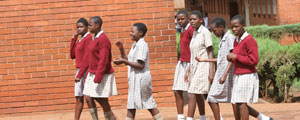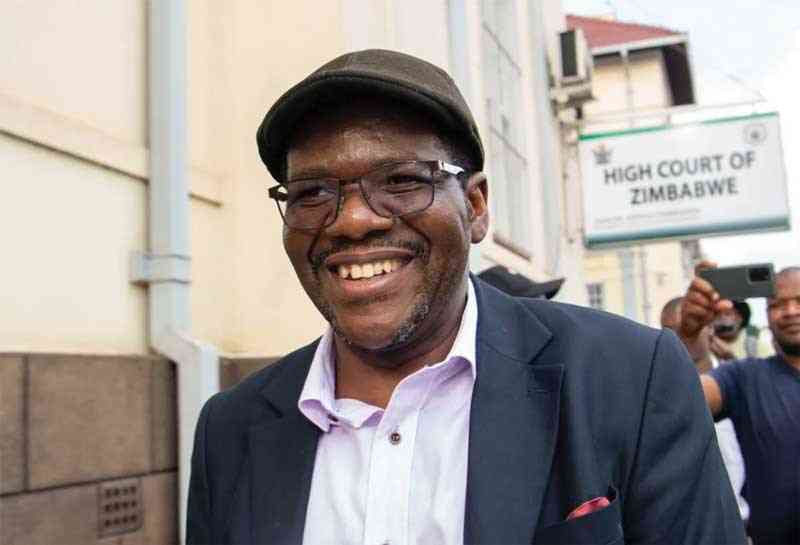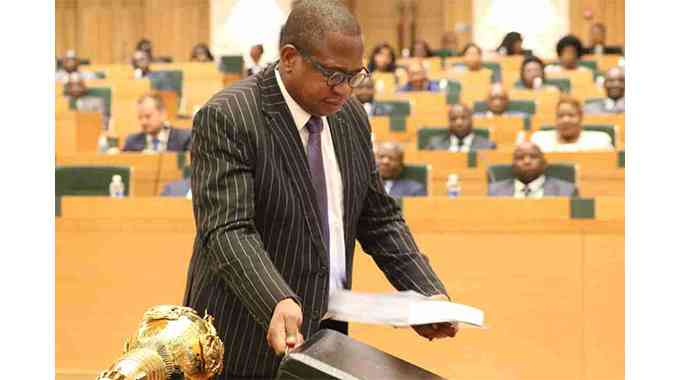
Figures, just like pictures, do not lie and in this regard, the true picture of the state of the country’s education is reflected in the statistics which show massive decline over the years.
Wonder Guchu
In the past 14 years, more than three million pupils sat for Ordinary Level in Zimbabwe, and of these only 470 000 passed.
During this period, not more than 50 000 pupils passed Ordinary Level each year with more than five subjects, a trend which should not only worry Zimbabwe, but make all those concerned sit back and discuss how to better the situation.
These frightening figures make it imperative to implement the recommendations made by the Nziramasanga Commission on Education in 1999.
They also make Zimbabwe’s much celebrated education look like nothing much because there is no real success if 200 000 pupils sit for an exam and only 40 000 pass.
Last year’s passrate by the standards of the past 14 years is the highest. There was a 14,58% passrate in 1998; 15,69% in 1999; 13,88 in 2000; 13,99% in 2001; 13,8% in 2002; 12,8% in 2003; 10,2% in 2004; 12% in 2005; 14,2% in 2006; 9,85% in 2007; 14,44% in 2008; 19% in 2009; 16,5% in 2010; 19,5% in 2011; 18,4% in 2012; and 20% in 2013.
From 1998 to 2013 (minus 2004 and 2005) 3 161 633 pupils wrote their “O” level exams. Only 467 735 passed.
- Chamisa under fire over US$120K donation
- Mavhunga puts DeMbare into Chibuku quarterfinals
- Pension funds bet on Cabora Bassa oilfields
- Councils defy govt fire tender directive
Keep Reading
There were 244 083 “O” Level candidates in 1998, but only 35 593 passed. In 1999, 38 036 out of 242 329 candidates passed. Out of 264 056 who sat for the exams in 2000, only 36 659 passed. More than 272 125 wrote “O” Level exams in 2001 and out of these 38 077 passed. A year later, of the 274 772 took the exams, 37 804 passed. And only 35 606 out of 2003’s 275 576 candidates passed.
Only 31 247 of the 154 229 candidates for 2006 passed; 2007 had 25 673 out of 179 274; there were 20 632 passes from 142 840 examined in 2008; 16 853 managed five passes in 2009 when 87 201 sat for the exam; 2010 saw 37 871 passing out of 229 522 candidates; 45 887 of the 241 512 of the class of 2011 passed; of the 268 854 students tested in 2012, only 31 767 passed; while in 2013, 285 260 wrote the exams and 36 031 passed.
What happened to the 2 693 898 who failed the exams?
The Nziramasanga Commission had some of the solutions as to what should have been done with the 2 693 898 children who failed the academic exams.
The commission was appointed by President Robert Mugabe in 1998 to look into the problems in education and was chaired by senior research Fellow and associate professor Caiphas Nziramasanga.
One of the things the commission noted was that while education received the lion’s share, 93% of the budget goes to salaries, leaving a mere 7% for operating costs.
The commission also noted that the teaching standards had declined and failure rates were very high. It also took a swipe at poor administration and irrelevant curriculum.
Instead, the commission recommended vocationalised education, with rural schools concentrating on productive sectors in their respective areas. It also recommended that the teaching methods should be changed to focus on skills, while reducing the focus on examinations.
The saddest part is that Zanu PF and the government adopted the report last year in December during its 14th National People’s Conference in Chinhoyi — 14 years later.
This means that during those 14 years, the problems found by the Nziramasanga Commission persisted unabated. It means that a whole generation — 2 693 898 — was lost — humanity broken.
Setting an impressive record, Zimbabwe’s enrollment jumped from 819 586 in 1979 to 1 235 994 at independence, and stood at 2 216 878 in 1985. By 1995, the figure had grown to 2 482 577 and to 2 509 153 in 1998.
There was, however, a drop in 1999 from 2 509 153 to 2 488 939. Maybe this made Mugabe to institute a commission of enquiry because by then 21% of primary school-going children were dropping out for lack of fees while 30% never made it to secondary school.
There was nothing wrong with infrastructure then because the number of primary schools rose from 2 401 in 1979 to 4 234 in 1985; and to 4 723 in 1999.
There were also no problems with qualified teachers then because by 1999 there were 59 973 trained teachers albeit a drop from the 66 502 of 1998. The number of teachers had steadily grown from the 28 455 in 1980 to 63 718 as of 1996.
Secondary schools also experienced an increase in enrolment from 66 215 in 1979 to 148 690 in 1981. By 1995, there were 786 154 secondary pupils whose number went up to 806 126 by 1997. The number of secondary schools too increased from 177 in 1979 to 694 by 1981, and to 1 215 in 1985; 1 512 in 1990 and 1 531 in 1997.
This expansion was backed up by financial support, with education receiving the lion’s share of the budget. Unfortunately, the budgetary allocations dwindled over the years, taking with them the excellent ordinary level pass rate which started to fluctuate.
In 1980, it was for example, 18,1% and five years later, it fell to 14,5%. By 1990, this had slid down to 14,3%. Although there was a slight increase in 1991 — to 15,3% — the allocation fell to 14% in 1992; again in 1993 it went down to 12,9%; up a bit in 1994 to 13,6%, but slid to 12,8% in 1995 and then to 11,8% in 1996.
What went wrong? Unstable political environment; a dead economy which drove away qualified teachers; disheartened and discouraged teachers who either spent much of their time on strike or just lazying around at schools; or even running side-businesses.
The European Commission also funded a report titled A Rapid Assessment of Primary and Secondary Schools in 2009 that was conducted by the National Advisory Board. This report concluded too that the quality of education declined because of a lack of teaching and sufficient learning materials.
According to the study, between 2007 and 2008, 20 000 qualified teachers left the profession while 70 000 fled their posts between 2000 and 2008 because of political violence.
A journal, European Social Sciences Research published in January 2013 by the Zimbabwe Open University (Zou) noted that out of a sample of 278 Zimbabwean schools, the teachers spoken to cited insufficient resources as one of the major problems.
The journal lists dilapidated buildings (50%); no piped water (67%); no electricity (92%); inadequate furniture (72%); lack of teaching material (94%) and inadequate textbook (100%).
Some of the teachers cited political interference as an impediment to quality education, with polarisation taking centre stage.
Another report titled Current Performance of the Education Sector in Zimbabwe: Key Policy Challenges Facing the Sector, compiled by Louis Masuko and presented at a workshop on sectorial economic development, policy challenges and the way forward in 2003, says teachers made up the biggest number of emigrants.
Masuko is from Economics and Technology Studies Institute of Development at the University of Zimbabwe and he submitted the paper during a workshop organised by the Zimbabwe National Chamber of Commerce and Freidreich Ebert Stiftung in Harare.
In the paper, Masuko argues that the recorded number of teacher emigrants increased from 165 in 1998 to 210 in 1999. From 2000 the number rose to 352 before it reached 407 in 2001.
Masuko recommends policy intervention in the form of stabilising the macro-economic environment; establishing a Graduate Investment Fund to promote self-employment; improving salaries and conditions of service for lecturers, teachers in general and for those in remote and rural areas; increase budgets for teaching materials; expanding the Basic Education Assistance Module programme to cater for school fees to the girl child; and making school calendar compatible with local economic activities.











